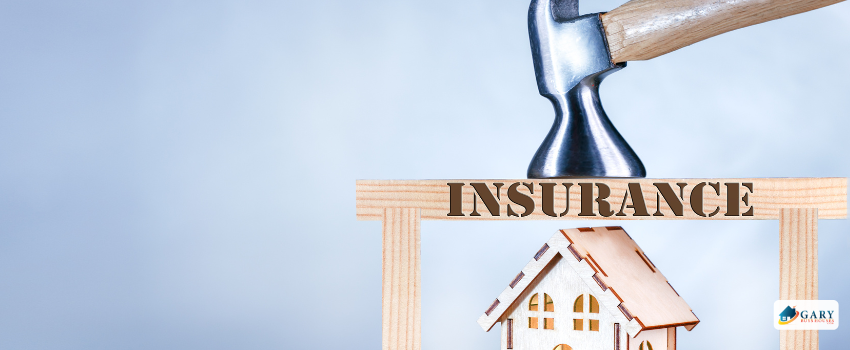Private Mortgage Insurance
For many Utah homeowners, there are additional fees and costs involved with a mortgage which never get taken into consideration. Closing costs. Title search fees. Loan origination costs. And one of the most mysterious costs of all — private mortgage insurance in Utah (or PMI, as it’s more commonly referred to.)
Haven’t looked thoroughly at your mortgage statement recently? You’re no different than hundreds of thousands of other Utah residents who rarely read itemized statements. After all, when your bottom line is the rising cost of interest rates, thoroughly scanning the fine print of any document for itemized costs tends to take a backseat compared to the rest of your monthly expense worries.
But private mortgage insurance (PMI) isn’t just another tack-on fee administered by your bank for no apparent reason. It is, by its definition, a form of insurance. Except… it’s a form of insurance which benefits a lender more than it benefits a homeowner. And it’s becoming more and more unavoidable—both in Utah and beyond.
But what is PMI? How does it work? Why do you need it? And can you prevent it?

What Is PMI – Private Mortgage Insurance?
The vast majority of conventional loans insist on a monthly premium cost known as Private Mortgage Insurance (PMI). PMI is designed to protect a lender in the event that a borrower defaults on monthly payments. In PMI, the insurance company may wind up paying any remaining balance and can frequently take possession of the property.
PMI is calculated by both lender standards, the value of your home, and more importantly, the loan to value ratio of your home. Typically, the average cost in Utah is somewhere between 0.5 to 1 percent of the entire loan annually on your home—although it’s more commonly administered as a monthly premium included in your mortgage statement. In other words, it’s an additional $50 – $100 a month you’re paying for every $100,000 you’ve borrowed.
If you signed any form of closing disclosure and loan estimate, then you likely agreed to pay PMI; even if you didn’t realize it. The projected cost can usually be found on page 1 of the itemized list of monthly costs on either document.
PMI will typically continue to be part of the monthly cost of your premium until the loan to value ratio—the assessed risk of how much you’re borrowing against the value of your collateral—reaches at least 78 percent.
Average Cost of PMI
The typical PMI cost typically spans between 0.3% and 1.5% of the initial loan amount annually. For instance, with a $200,000 mortgage and a 1% PMI rate, you can expect to pay around $2,000 yearly or $166.67 monthly for PMI premiums. Various factors determine the precise cost, such as credit score, loan-to-value (LTV) ratio, and mortgage type.
It’s essential to note that PMI costs aren’t fixed. Mortgage lenders frequently provide diverse rates and terms, making comparison shopping a potential source of substantial savings. Moreover, the Homeowners Protection Act (HPA) mandates lenders to automatically terminate PMI once the LTV ratio drops below 78%, indicating that PMI payments could be temporary.

Who Benefits From Private Mortgage Insurance?
The obvious answer is, of course, your lender. Particularly if you wound up taking out a Federal Housing Authority-backed loan with a low down payment. But there’s actually a benefit to PMI for you as a homeowner, even though it might not seem so obvious at first.
For individuals with less than stellar credit, the option of taking out an FHA backed loan isn’t a question of choice. It’s a necessity. But as mentioned previously, the loan to value ratio of your home was a decisive factor in your bank’s willingness to approve your loan; and subsequently, the cost you’ll be likely to pay for PMI. The greater the LTV, the higher rate you’ll wind up paying for PMI. By keeping up with regular mortgage payments, however, you can not only reduce the costs of your monthly PMI but you’re also rebuilding your credit. And while it’s a slow and long-term process, the ultimate benefit can frequently offset the need for monthly premium payments.

Do I Need To Pay Private Mortgage Insurance?
In the vast majority of cases, yes. Conventional lenders will rarely waive any standard rates and fees if your down payment is relatively low. And this includes PMI. This isn’t a question of greed; it’s a preventative measurement. They are, after all, placing good faith in your ability to pay back the cost of your loan and additional interest. And the need to protect that good faith is absolutely imperative if they want to prevent any loss from occurring.
Keep in mind, we said if the down payment was low enough. For those of you who are able to pay at least a 20 percent down payment on your home, you’ll find that most lenders will be happy to waive the cost of PMI. Another option is what’s known as an 80/10/10, or “piggyback,” loan.
With a piggyback loan, you’re essentially only putting down 10 percent down payment on your home, while financing an additional 10 percent through a second home equity line of credit.
Because most lenders require only 20 percent down payment to reduce additional monthly fees, your PMI should automatically be waived.
Keep in mind, however, that the additional home equity line of credit comes with a substantially higher interest rate and can be just as subject to credit approval as a traditional mortgage. You may also find difficulty refinancing if you’ve already taken out a second loan and happen to have fallen behind on monthly mortgage payments. But piggyback loans have been proven to be both an effective and creative way of reducing monthly costs—provided you qualify for approval.

Will Private Mortgage Insurance Protect Me From Foreclosure?
Sadly, no. PMI is designed to protect lenders, not homeowners. And sadly, avoiding foreclosure in Utah is just one of the inevitable realities you may have to find yourself facing.
If you’re facing foreclosure, the most convenient way of paying off your remaining balance is through a short sale of your home. But short sales can never be guaranteed; particularly if you’re facing a tight deadline and have neither the time nor patience to rely on a realtor.
One helpful avenue is to contact a reputable home buying company like us at GaryBuysHouses. We frequently work with lenders to negotiate payments of your remaining balance. Approval is almost universally guaranteed, even if your home has depreciated in value; frequently, in as little as 3-5 business days.
Sometimes, combined monthly payments can be a bit too much to handle. Particularly when it comes to banks, who can be far from flexible no matter how understanding a loan officer might seem. But it’s important you know just what you’re paying for each month. And it’s even more important to know just how you’re going to pay it.
